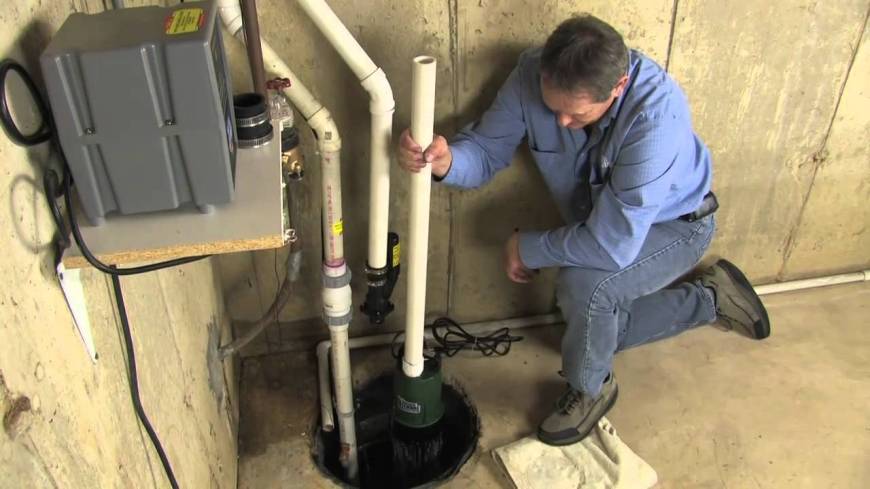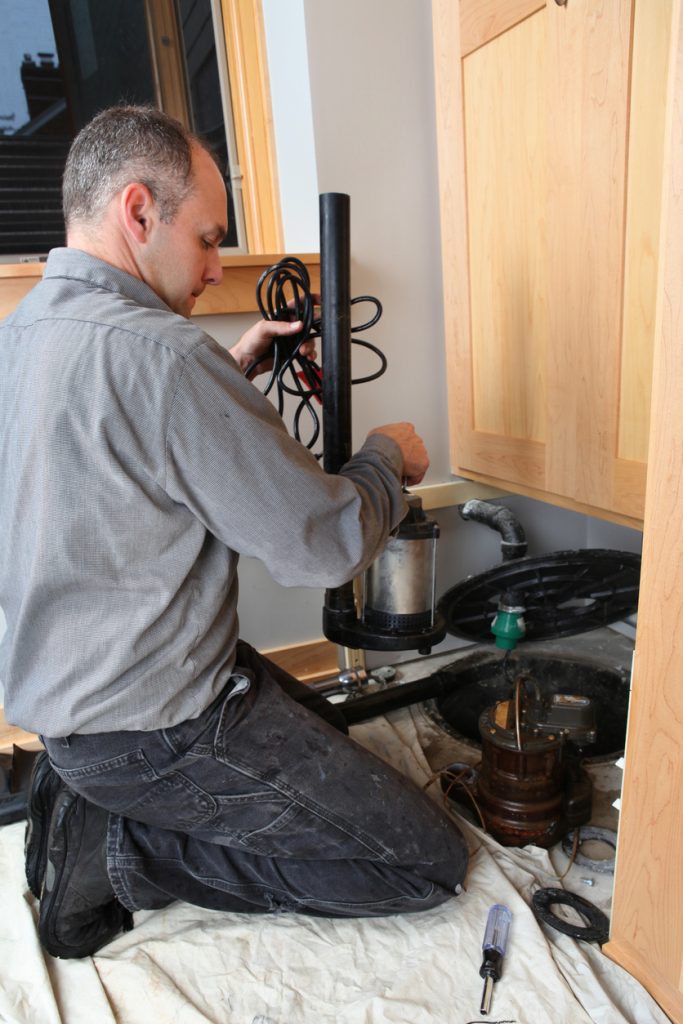We have noticed the article on Steps to Cleaning Your Sump Pump Properly down the page on the net and accepted it made sense to write about it with you on this page.

Sump pumps are crucial components in several homes, particularly in locations prone to flooding or too much wetness. They help protect against water damage by effectively eliminating excess water from basements or crawl spaces. However, like any other appliance, sump pumps call for normal upkeep to ensure they operate effectively when needed one of the most. Cleaning your sump pump is a crucial part of its upkeep, and understanding just how to do it correctly can conserve you from expensive repair services and possible catastrophes.
Intro
Keeping a tidy sump pump is essential for its appropriate performance and longevity. Neglecting this essential job can bring about blockages, malfunctions, and ultimately, water damages to your residential property. As a result, finding out just how to cleanse a sump pump is vital for house owners who depend on these tools to keep their basements dry and secured.
Recognizing the Sump Pump
Before diving into the cleaning procedure, it's vital to have a basic understanding of how a sump pump works. Normally set up in a pit or container below the basement flooring, a sump pump contains a number of essential elements, including a pump, a float switch, and a discharge pipe. When water gathers in the pit, the float switch activates the pump, which after that pumps the water out with the discharge pipe, far from the building's structure.
Signs of a Dirty Sump Pump
Recognizing when your sump pump needs cleansing is important for avoiding possible breakdowns. Some usual indications that indicate a dirty sump pump include odd noises throughout procedure, minimized water flow, and visible particles in the pit. If you notice any of these signs, it's essential to cleanse your sump pump quickly to stay clear of any kind of further problems.
Preparing for Cleaning
Prior to you start cleaning your sump pump, it's necessary to take some safety preventative measures. Start by shutting down the power to the pump to avoid any kind of electric crashes. Additionally, put on appropriate safety gear, such as gloves and safety glasses, to shield yourself from dust, particles, and potential microorganisms.
Detailed Overview to Cleaning Up a Sump Pump
Shutting Off the Power
Begin by separating the power supply to the sump pump to avoid any crashes while cleaning.
Removing Debris and Dirt
Make use of a bucket or an inside story to eliminate any type of visible debris, dust, or sediment from the sump pit. Dispose of the particles effectively to stop it from clogging the pump or the discharge pipe.
Cleaning up the Pump and Drift Switch Over
When the pit is free from debris, carefully get rid of the pump from the pit. Check the pump and the float button for any kind of signs of damage or wear. Use a soft brush or fabric to cleanse the surface areas and remove any type of accumulated gunk.
Purging the System
After cleaning the pump and float button, flush the sump pit with clean water to get rid of any kind of continuing to be dust or sediment. This will certainly assist ensure that the pump runs efficiently and efficiently.
Looking For Proper Performance
Before re-installing the pump, do a fast examination to make sure that the float button triggers the pump appropriately. Pour some water into the sump pit and observe the pump's procedure. If everything is working appropriately, you can reassemble the pump and reconnect the power supply.
Maintenance Tips to Keep Your Sump Pump Clean
In addition to regular cleansing, there are numerous upkeep pointers you can comply with to maintain your sump pump in ideal problem:
- Routine Examination: Examine your sump pump regularly for any signs of wear, damages, or clogs.
- Maintaining the Surrounding Location Clean: Make Sure that the area around the sump pit is free of particles, dirt, and blockages.
- Testing the Pump Regularly: Evaluate your sump pump occasionally by putting water into the pit and observing its operation. This will assist you recognize any type of prospective concerns before they rise.
Conclusion
Cleaning your sump pump is a critical aspect of its maintenance and makes certain that it runs efficiently when you need it the most. By complying with the actions laid out in this overview and including regular upkeep into your regimen, you can expand the life expectancy of your sump pump and shield your home from water damages.
6 STEPS ON HOW TO CLEAN A SUMP PUMP PROPERLY
UNDERSTANDING SUMP PUMPS
Your sump pump plays a crucial role in protecting your home by managing and removing excess water. It primarily functions as a “shield”, guarding your basement against the damaging effects of water accumulation. The pump is housed in a sump pit in the lowest part of your basement, and its job is to pump out any water that collects there.
During heavy rainfalls or when snow melts rapidly, water can infiltrate your basement, posing potential risks like flooding, structural damage, and harmful mold growth. Here, the sump pump springs into action, pumping out the intruding water and directing it away from your home.
SAFETY FIRST
Before cleaning, remember to prioritize safety. Disconnect the sump pump from the power source to prevent any accidental electric shocks. Also, wear sturdy gloves to protect your hands from any sharp or dirty components within the pump.
REMOVE THE SUMP PUMP
After ensuring your safety, the next step is to remove the sump pump from its pit. Doing this might require careful maneuvering as you don’t want to damage any pump components. Once removed, clean the sump pit to remove any accumulated debris or sludge.
INSPECT THE PUMP
Inspect the pump for any visible signs of wear or damage. Check the power cord, float switch, and impeller housing. If any components look worn out or damaged, consider replacing them to ensure optimal performance.
CLEAN THE PUMP
Thoroughly clean the pump with warm, soapy water. Make sure to rid it of any dirt, gravel, or other debris that might impede its performance. You can use a toothbrush to clean the small, hard-to-reach parts of the pump.
REINSTALL THE SUMP PUMP
- Reinstall the pump into the sump pit
- Make sure it’s positioned correctly to remove the water effectively
- Once it’s back in place, reconnect it to the power source
TEST THE PUMP
Finally, pour some water into the pit to ensure the pump works correctly. It should start automatically and begin pumping out the water; if it doesn’t, check the power source and the positioning of the pump.
Remember, while cleaning your sump pump is an essential part of home maintenance, hiring a professional plumber for a thorough inspection and cleaning at least once a year is also important. This will ensure that your pump is in optimal condition, ready to protect your home from potential water damage.
BEST PRACTICES FOR CLEANING SUMP PUMP DISCHARGE PIPES
- Regular Inspection: Regularly inspect your discharge pipes, especially during heavy rainfall or snowmelt periods. Look for any signs of blockage or damage. Early detection of problems can prevent serious issues down the line.
- Periodic Cleaning: Over time, sediment and debris can accumulate in the discharge pipes, impeding the flow of water. Regular cleaning helps keep the pipes clear and functioning efficiently. You can use a high-pressure water jet to effectively clean the pipes.
- Insulation During Winter: In colder climates, discharge pipes can freeze, blocking the outflow of water. Protect your discharge pipes from freezing temperatures by insulating them with foam pipe insulation. This will ensure the sump pump can continue to discharge water even in freezing conditions.
- Proper Positioning: The discharge pipe should be positioned to direct water away from your home’s foundation. Improper positioning can lead to water seeping back into the basement. Ensure the pipe is long enough and angled correctly.
- Installation of a Check Valve: A check valve prevents water from flowing back into your sump pit after the pump has pushed it out. Installing a check valve helps maintain the efficiency of your sump pump and reduces the risk of flooding.
- Minimize Pipe Turns: Every curve or turn in the discharge pipe can decrease the efficiency of water flow. By minimizing turns and bends in your discharge pipe, you can increase the efficiency of your sump pump.
https://www.fullspeedplumbing.com/how-to-clean-a-sump-pump-properly9999/

We were shown that article on through an acquaintance on a different website. Are you aware of another individual who is in the market for the niche? Be sure share it. Thanks a bunch for your time. Kindly check up our blog back soon.
Schedule An Appointment
Comments on “Quick Steps to Taking Care of Your Sump Pump”